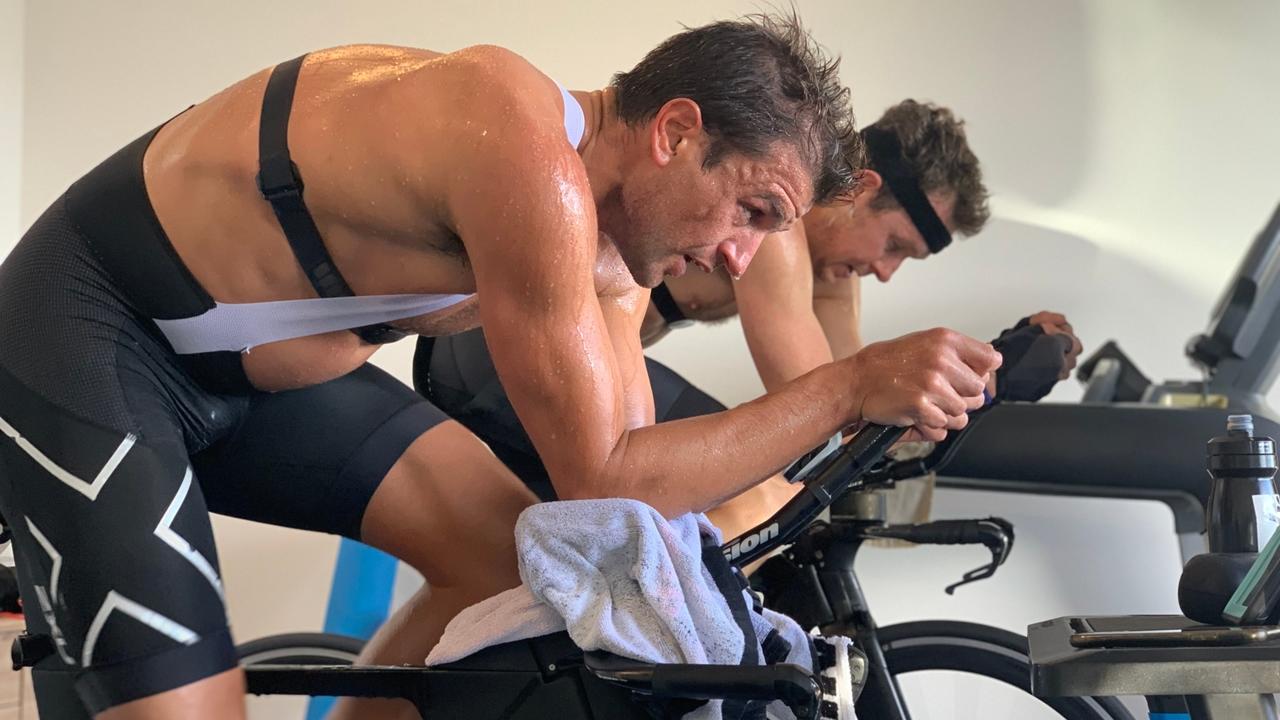HRV Guided Training: Maximizing your Training in the Last Phase of the Season

With the race season coming to a close, and the Ironman World Championships just around the corner, many athletes will be squeezing in as many key sessions as possible during this critical training period. But as we sit on a knife’s edge between training “too much” and “too little”, it’s useful to have some objective measurement to ensure we’re maximizing the adaptation from every training session we undertake.
Recently, I was fortunate enough to have contributed to a heart rate variability guided training study with lead author Alejandro Javaloyes (1). The study compared an eight-week cycling training programme prescribed according to either pre-defined block periodization (BP) or guided using heart rate variability (HRV). That is, subjects completed either a mixed programme set out in advance or a programme adjusted on a day-to-day basis via daily heart rate variability measurements using the smartphone application ‘HRV4Training’.
HRV is a measurement of the variability in the time between an athlete’s heartbeats, in this case at rest upon waking. How variable the time between heartbeats is, gives us some insight into cardiac autonomic regulation, or the function of our nervous system. Importantly, HRV can tell us if we are stressed and ought to back off training a little, or if we are absorbing training well.
The two training groups in this study ended up completing the same volume of training, with the same amount of time spent in low, moderate, and high-intensity training zones. However, while VO2max, power output at the aerobic threshold and anaerobic thresholds, and power output in a 40-min time-trial all significantly improved in the HRV-guided training group, the BP group only saw significant improvements in their power at anaerobic threshold. These results suggest manipulating the session performed at a daily level in accordance with HRV has favourable effects on the adaptive response to training, even without altering total training load.
We are currently building the next course - Endure IQ LDT102 - which launches at the end of November. One of the modules in Endure IQ LDT102 covers training periodization. Our belief is that training periodization is an overrated concept and that there is a big difference between structured and periodized training. This viewpoint is nicely covered by John Kiely, an athlete-turned-academic, and expert on training periodization, in a high-profile article published last year titled “Periodization Theory: Confronting an Inconvenient Truth” (2). In Endure IQ LDT102 we will cover how to structure training, whilst keeping in mind that adequately monitoring the training response is critical for optimal results (keep an eye out for Endure IQ LDT104 next year, which is all about athletic monitoring).
Indeed, we’re now seeing a number of positive results in HRV guided training studies (five in total now). Clearly, physiological, emotional, and life stresses all play pivotal roles in an athlete’s response to a training stimulus and need to be accounted for in training programming at a day-to-day level. With recent technologies making HRV monitoring easier and easier (3), it’s a convenient, evidence-based, ergogenic tool to have in your monitoring toolbox!
If you would like to read the recent HRV guided training paper in full, be sure to complete the form below to access the download.
If you want to learn more about how to optimize your long distance triathlon performance, check out our online courses - Endure IQ LDT101: The Practical Application of Low Carbohydrate Performance for Long Distance Triathlon and Endure IQ LDT102: Training Program Fundamentals for Long Distance Triathlon
References
- Javaloyes A, Sarabia JM, Lamberts RP, Plews DJ, Moya-Ramon M. Training prescription guided by heart-rate variability vs. block periodization in well-trained cyclists. J. Strength Cond. Res (2019, In Press).
- Kiely J. Periodization theory: Confronting an inconvenient truth. Sport Med 48: 753–764, 2018.
- Plews DJ, Scott B, Altini M, Wood M, Kilding AE, Laursen PB. Comparison of heart-rate-variability recording with smartphone photoplethysmography, polar H7 chest strap, and electrocardiography. Int J Sports Physiol Perform 12: 1324–1328, 2017.
JOIN THE SQUAD
Take charge of your performance with proven training programs and workouts, adjustable to your needs, in the Endure IQ Training Squad.
LIMITED OFFER
